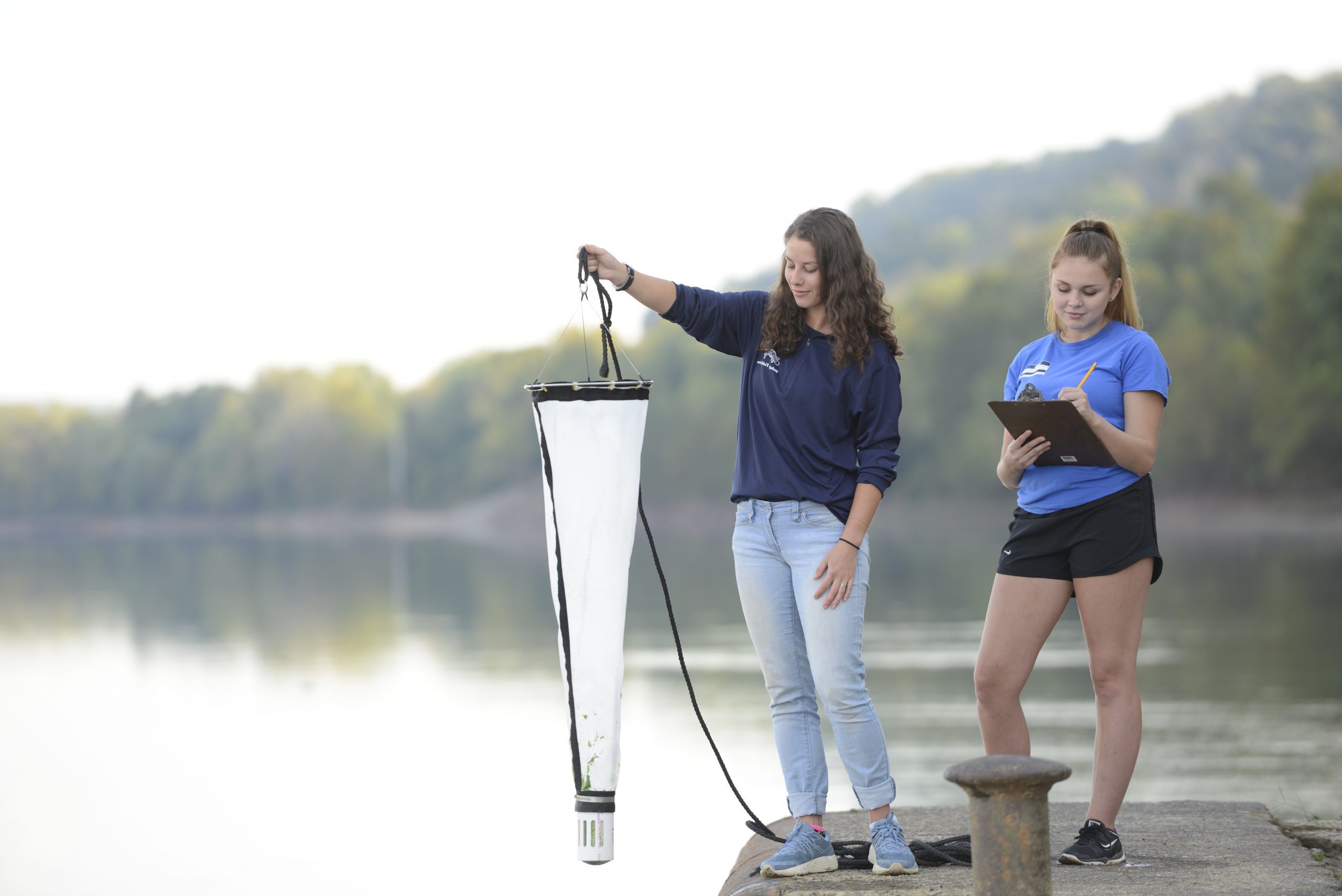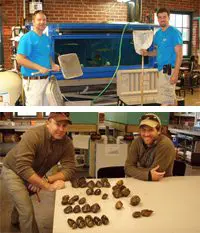
Field Station Research Projects
Ohio River Bioassessment and Monitoring
The Biology Field Station has established a long-term ecological monitoring program on the Ohio River. For over 35 years, this research has examined the water quality, habitat and fish populations around two coal-burning power plants currently operated by DUKE Energy. The primary objectives of these studies are to assess the aquatic ecosystem around the plants by examining the current composition of the fish community, the spatial variation between the fish populations upstream and downstream of the plant, and the hydrological, chemical, and physical characteristics of the Ohio River near the plant.
Drinking Water Protection
The Water Quality Lab at the Field Station houses, a gas chromatograph (donated by ORSANCO—the Ohio River Valley Water Sanitation Commission). The GC will be used for monitoring the Ohio River, or to run samples from any other source. The system looks for VOCs, or volatile organic chemicals, such as the 4 methylcyclohexane methanol, involved in the spill from WV in January 2014. More about ORSANCO’s work with GCs on the Ohio River can be found at here.
Previously, the Biology Field Station has collaborated with Dr. Joel Allen of the United States Environmental Protection Agency on the deployment of a stand-alone, streamside water quality monitoring station (WQMS) incorporating both physical/chemical and biological water quality monitoring technologies with data telemetry, data analysis, and water sampling capabilities on the Ohio River. The very first pilot station is located at the Biology Field Station. This station provides needed information regarding design and other technical issues for streamside WQMSs to be incorporated into later work resulting in a water quality early warning system (EWS) network of WQMSs strategically placed throughout the Ohio River watershed for the protection of source water resources.
Freshwater Mussel Conservation

Freshwater mollusks are arguably North America’s most threatened and endangered group of animals. The Station partnered with the Freshwater Mussel and Conservation Research Center operated by The Ohio State University and Columbus Zoo, the Kentucky Department of Fish and Wildlife Resources, and the Newport Aquarium to understand the basic biology of imperiled mussels and assist in the recovery efforts of threatened/endangered mussel species. Specifically, the Aquarium staff has built a new 720-gallon tank at the Station that will serve as a holding facility of various fish species that are hosts to the life cycle of these mussels.
Most recently, the Field Station installed a system of tanks, utilizing Ohio River water, to provide for the holding of adult and juvenile mussels (both non-federally listed and federally listed). Ultimately, the goal will be to propagate and culture of federally endangered species (i.e., sheepnose, rough pigtoe, purple cat’s paw, spectaclecase, orangefoot pimpleback, pink mucket, clubshell, and other species), which will be used in the recovery of these species in the Ohio River. This project will further the missions the Field Station as well as Fish and Wildlife agencies at the state and federal level, enabling aspects of recovery activities for several species of rare and federally listed mussels.
Aquaculture Facility
Thomas More students and faculty working with the USEPA and its contract staff have recently established a new aquatic culture and testing facility at the Ohio River Biology Field Station. The EPA and its contract staff have over 60 years of combined experience in the operation and toxicity testing of aquatic vertebrate, invertebrate, and plant cultures. Development of the facility will include designing and installing a system to treat and deliver the well water to the various culture tanks. The water delivery system will use a 150-gallon tank to hold the culture water for aeration and temperature adjustment. Water will be delivered using a submersible pump and PVC water lines. Fish culture tanks will be flow-through, with all old water delivered to the drain, which feeds the artificial wetland. Pimephales promelas (the Fathead minnow-FHM) will be cultured in this system. Adult FHM will be used to supply eggs, which will then be hatched and reared out for use in testing or to supply additional spawners for use in the aquatic system. Additionally, as the system develops, the freshwater invertebrates Daphnia magna, Ceriodaphnia dubia, Hyalella azteca, Chironomus tentans and Lumbriculus variegates may be cultured as well.
Stormwater and Wastewater Management
Sanitation District No. 1 (SD1) is responsible for the collection and treatment of Northern Kentucky’s wastewater, as well as regional stormwater management. We have partnered with SD1 and established the Environmental Academy. Through this Academy, Thomas More faculty and students advise and assist SD1 biologists with their Illicit Discharge Detection Program and Watershed Management Program. Students work alongside SD1 staff in the field to inventory outfalls, assess habitats and conduct water quality assessments. Recently, scientists from the Boone County and Kenton County Conservation Districts have participated in the Environmental Academy.
DNA Barcoding
Since 2011, researchers at the Station have been collecting fish tissues for DNA sequencing analyses, particularly of regions of DNA called barcode genes (i.e. CO1 and 16sRNA genes). Barcode genes are ways to identify species from a genetic perspective. Beyond confirming identifications, the sequence data can be used to answer a variety of questions related to hybridization, migration patterns, and population structure, among others. Further, the barcode data is entered into the Fish Barcode of Life Initiative (FISH-BOL). This is an international global effort to coordinate an assembly of a standardized reference sequence library for all fish species, one that is derived from voucher specimens with authoritative taxonomic identifications.
Collaborations
The Center for Ohio River Research and Education has become a regional center for research, consulting, government, private industry, environmental education and community service. Students and faculty have worked with a diverse group of professionals with backgrounds in science, engineering, education, and other similar disciplines. Over the past decade, we have worked with the following agencies, in addition to numerous other schools and universities:
- Kentucky Department of Fish and Wildlife Resources (www.fw.ky.gov)
- The Newport Aquarium (www.newportaquarium.com)
- The Ohio River Valley Water Sanitation Commission (www.orsanco.org)
- Sanitation District #1 (www.sd1.org)
- The United States EPA (www.epa.gov)
- United States Fish and Wildlife Services (http://www.fws.gov/)